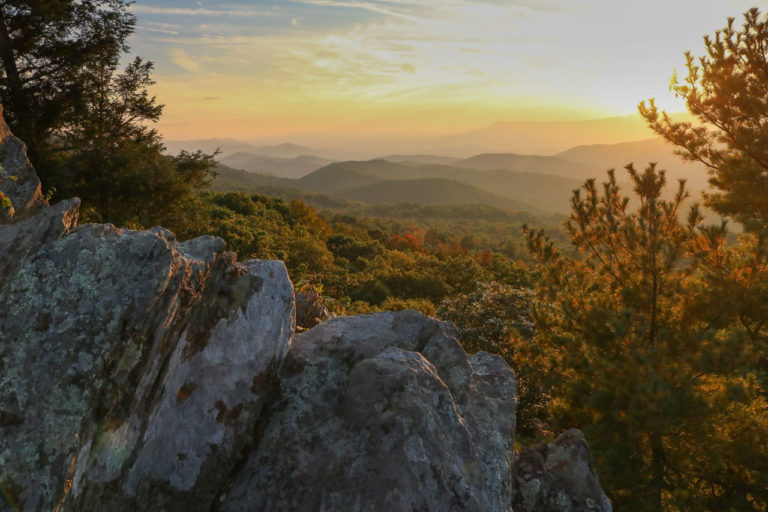8 Awesome Things to Do in Deschutes National Forest, Oregon
Adjacent to Willamette National Forest, Deschutes National Forest is a sprawling area in central Oregon. Preserving huge tracts of forests, lakes, volcanoes and mountains south(west) of Bend, it’s a dream destination for hikers, kayakers, rock climbers and other adventurists.
Located partially in four Oregon counties—Deschutes, Jefferson, Klamath and Lake—on the eastern slopes of the Cascade Range, this national forest comprises no fewer than 1.8 million acres (7,300 km2).
t’s also home to five designated wilderness areas, all of which also extend into other, adjacent national forests.
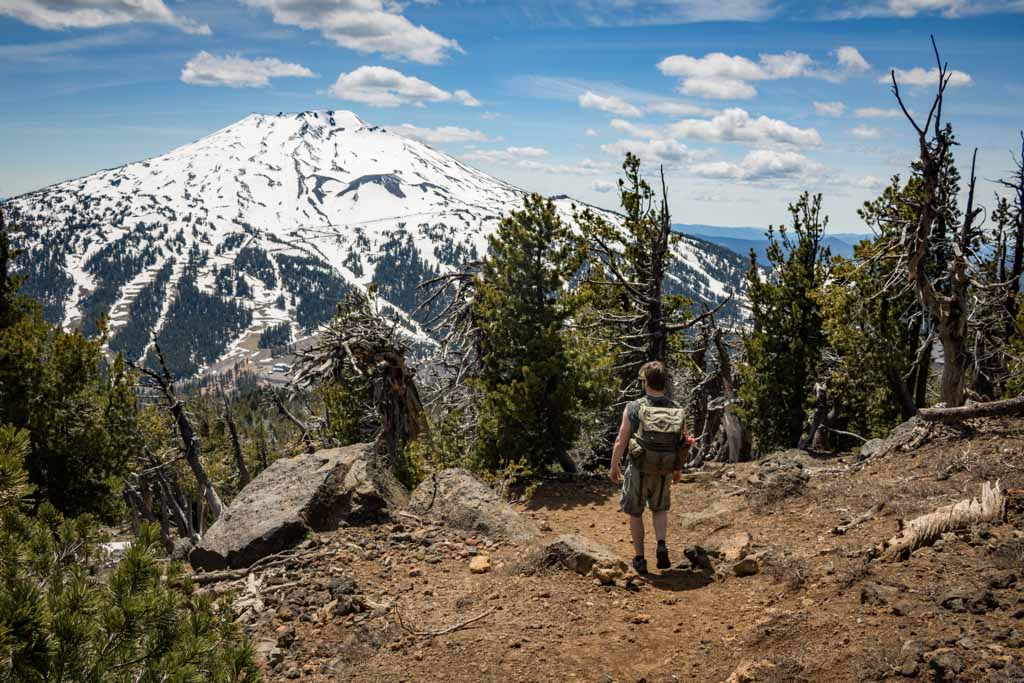
This post about what to do in Deschutes National Forest contains affiliate links. You can read more about our Terms of Use / Disclosure here.
8 Best Things to Do in Deschutes National Forest, Oregon
From the Oregon Coast to Mt. Hood and Crater Lake, I love the variety of the Oregon national parks and forests. Deschutes National Forest may, however, just be my favorite place to go for an outdoorsy getaway.
It’s amazingly diverse, featuring shimmering alpine lakes and scenic rivers, cinder cones and sweeping summit vistas.
The potential for all sorts of outdoor activities in Deschutes National Forest attracts all kinds of visitors, from RV campers and families with kids to hardcore backpackers and rock climbers. It’s a great summer destination, a must-visit place on an extended Cascade volcanoes road trip.
While there are several different areas to explore in Deschutes National Forest, I recommend focusing on the following two. They’re easily accessible from Bend, as well as gloriously beautiful and filled with attractions.
- Cascades Lakes Area (west of Route 97)
- Newberry National Volcanic Monument (along and east of Route 97)
I suggest spending at least two days in each area—I’ll tell you about my favorite campground to base yourself at the end of this post.
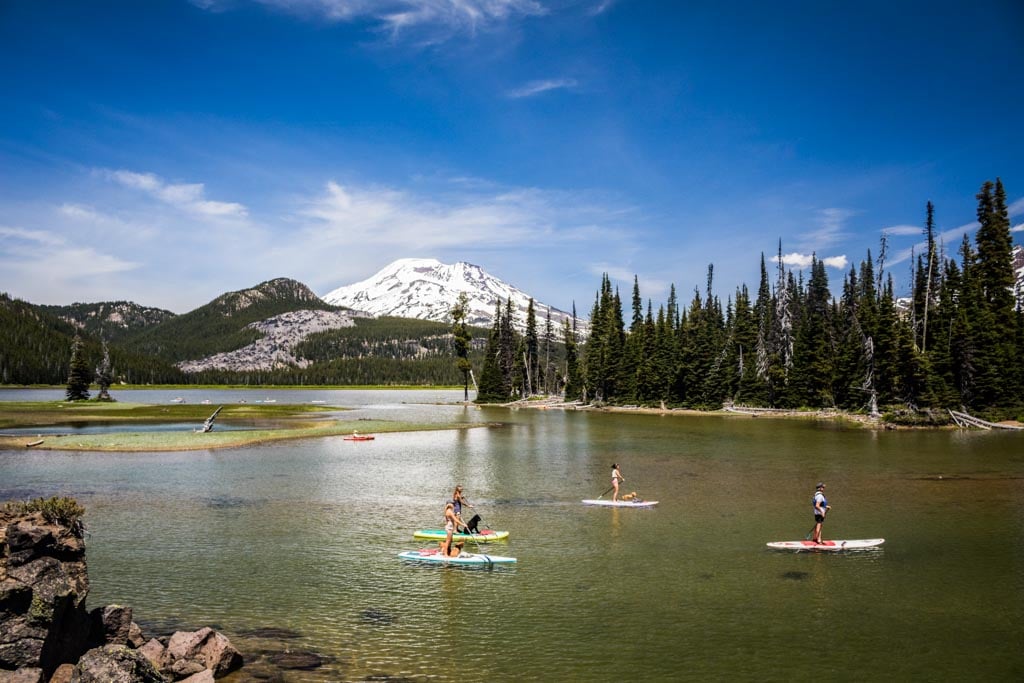
Top Things to Do in the Cascade Lakes Area, Deschutes National Forest
Located in the heart of Deschutes National Forest, the Cascade Lakes are a collection of twelve lakes and two reservoirs. This beautiful chain of lakes starts with Todd Lake just west of Mount Bachelor and continues south to Davis Lake.
The area offers fantastic hiking, boating, fishing and (basic) camping. In winter, it’s a popular destination for snowmobiling, cross-country skiing, snowboarding and snowshoeing.
Drive the Cascade Lakes Scenic Byway

The absolute star attraction of this stunning area is the Cascade Lakes Scenic Byway. Running for 66 miles from Bend to the intersection with Oregon Route 58, it passes by all the Cascade lakes, from popular Sparks Lake to Devils Lake and Elk Lake.
The route also runs past mighty Mount Bachelor, Bend’s winter sports hub.
There are views of Broken Top Mountain along the way, while I also recommend the trail up Tumalo Mountain, where epic views of Mount Bachelor and the Three Sisters await.
Hike Up Tumalo Mountain
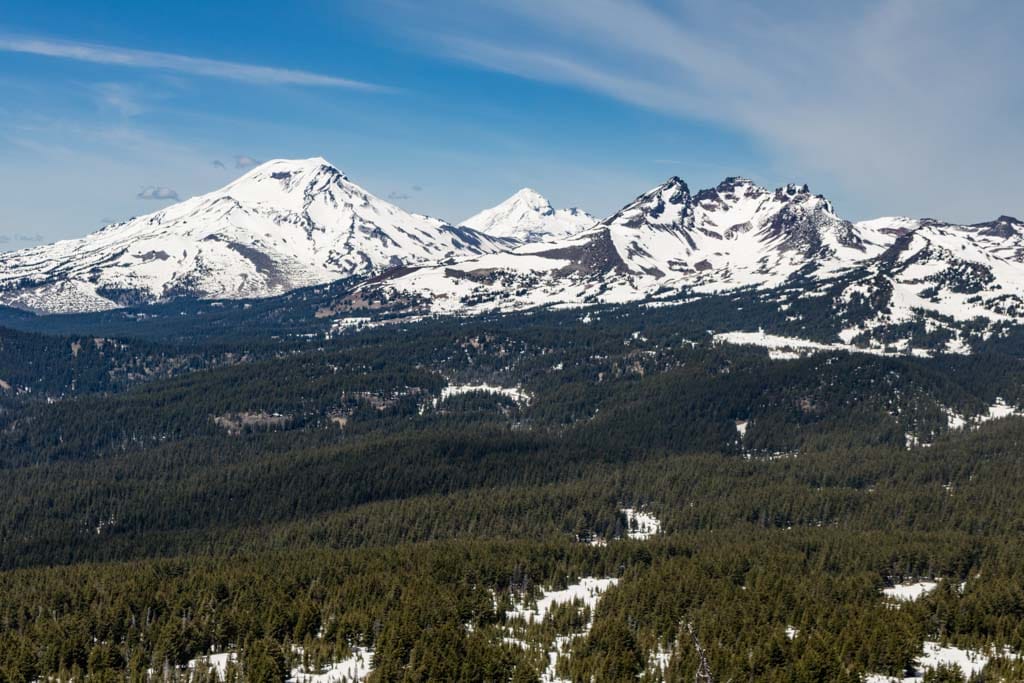
A “small” shield volcano itself, Tumalo Mountain is especially great for its breathtaking views of the other, larger volcanoes in Deschutes National Forest and beyond.
Located just across the Cascade Lakes Scenic Byway from Mount Bachelor, the Tumalo Mountain Trail is one of the best hikes in Deschutes National Forest near Bend.
This out-and-back hike is about roughly 4 miles long and takes an hour or two, depending on how long you spend at the summit. All in all, this is an easy-to-moderate and relatively short hike, yet with world-class views. In fact, Tumalo Mountain has one of the best panoramic views in central Oregon.
Along the way up (and back down), there are amazing views of Mount Bachelor, but the real treat awaits at the top. At trail’s end, you can enjoy a fantastic vista of the Three Sisters, which appear so close you might just be able to touch them.
If I had to put together an itinerary of Deschutes National Forest activities, the hike up Tumalo Mountain would certainly be one of the first things I’d write down.
Walk the Ray Atkeson Memorial Trail
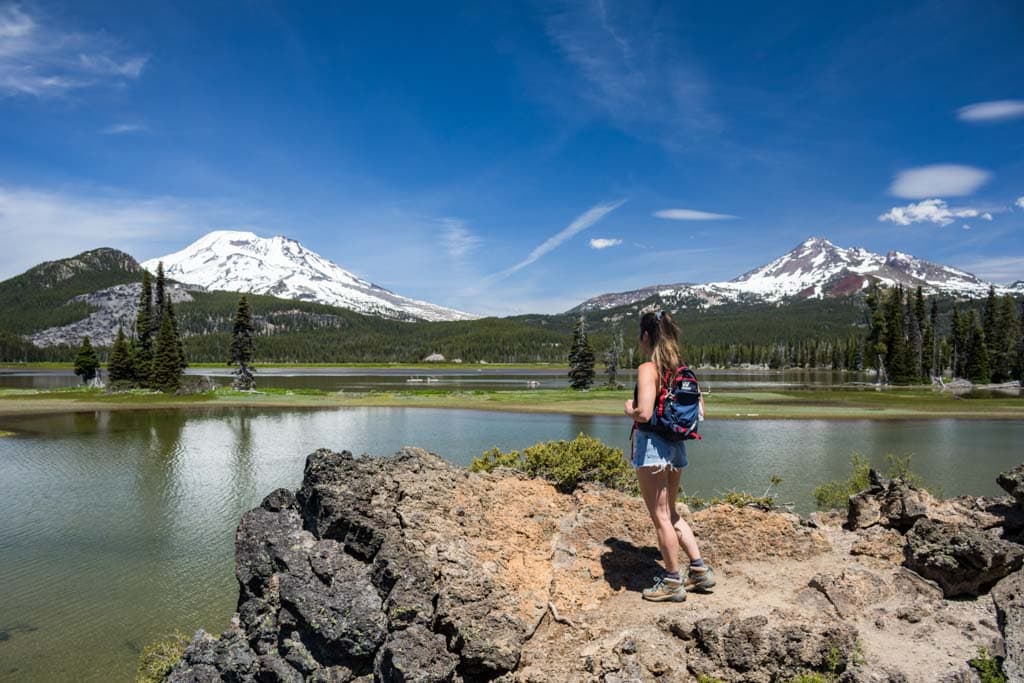
Hiking the Ray Atkeson Memorial Trail is both one of the easiest and most scenic things to do in Deschutes National Forest. Located on the eastern shore of Sparks Lake, this popular 2.3-mile loop runs partially through a lodgepole pine forest and lava flows, and partially along the lakeshore.
The trail is named after the legendary, Oregon-based landscape photographer Ray Atkeson, who’s most famous for his images of the landscapes of the American West.
The trail includes a half-mile paved wheel-accessible section, while several benches offer a spot to enjoy the sensational views of the Cascade mountains all around.
Kayak on Sparks Lake
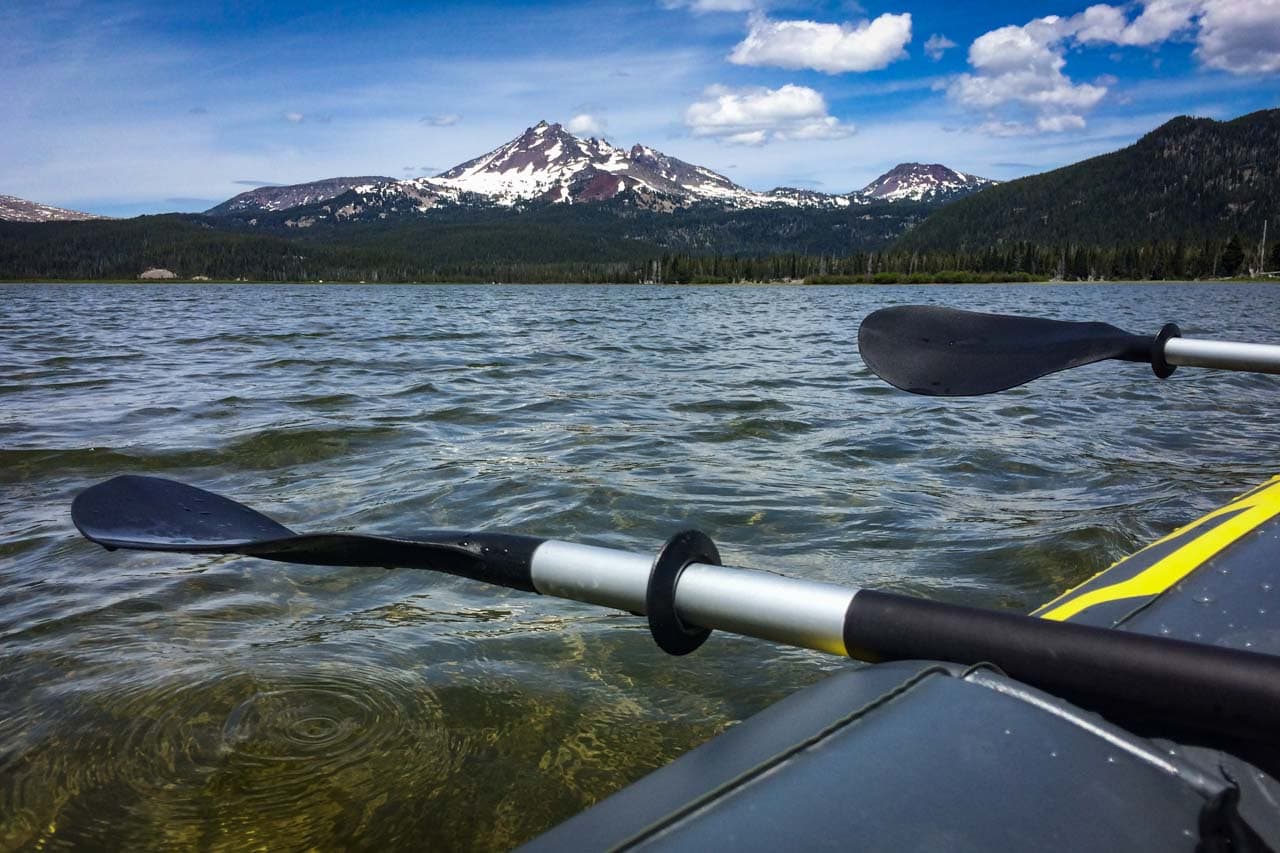
If you have your own canoe or kayak—we’re huge fans of our inflatable two-person kayak!—spending a few hours exploring shallow Sparks Lake is an absolute must-do activity in Deschutes National Forest.
This gorgeous lake was a favorite photography subject of Ray Atkeson, while nowadays, it attracts hikers, picnickers, boaters, sunbathers and kayakers.
Note that this is a very popular day trip destination from Bend, especially on warm summer days. It’s about 26 miles west of Bend, at the end of a gravel road off the Cascade Lakes Scenic Byway.
If you’re planning to visit Sparks Lake, make sure you can there early in the morning to find a parking spot. Additionally, there are also a number of primitive, yet amazing, campsites along the lake. Get there early to claim one!
Of all the places I’ve been to in Oregon, this is easily the most photogenic one. The term “jaw-dropping” is greatly overused nowadays, but it does accurately—literally—describe your reaction when you see Sparks Lake for the very first time.
Other Outdoor Activities in Deschutes National Forest’s Cascade Lakes Area
- Skiing or snowboarding at Mt. Bachelor
- Hiking the Green Lakes Trail
- Floating down the Deschutes River
- Kayaking, canoeing or stand-up paddle boarding on a dozen other Cascade Lakes
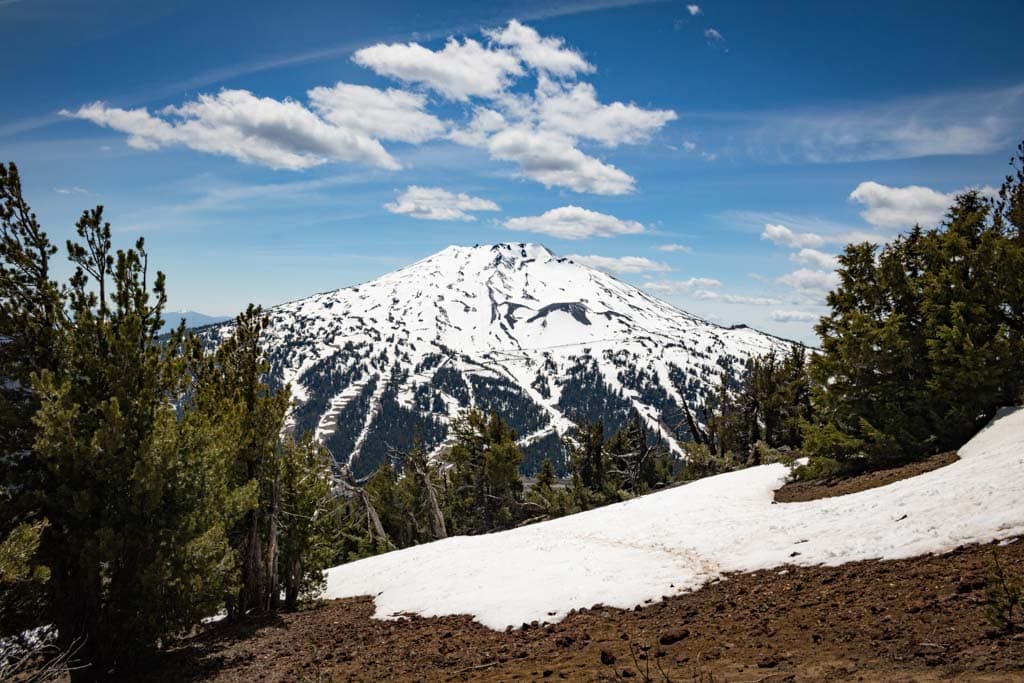
Top Things to Do in Newberry National Volcanic Monument, Deschutes National Forest
A part of Deschutes National Forest just south of Bend, the Newberry National Volcanic Monument is both remarkable and underrated.
Much less famous than other Oregon volcanoes, such as Mt. Hood, nearby Mount Bachelor and Crater Lake, the gigantic Newberry Volcano is actually the largest of all Cascade volcanoes by volume. It’s about the same size as the entire state of Rhode Island.
It’s an enormous shield volcano that encompasses much of eastern Deschutes National Forest. Preserved as Newberry National Volcanic Monument—managed by the U.S. Forest Service—it comprises 86 square miles of volcanic features.
When visiting this part of Deschutes National Forest, you can explore lava flows, lava caves, cinder cones and caldera lakes. Parts of this volcanic monument are so otherworldly—almost literally—that Apollo astronauts used to train here in 1964-1966.
Paddle Paulina Lake
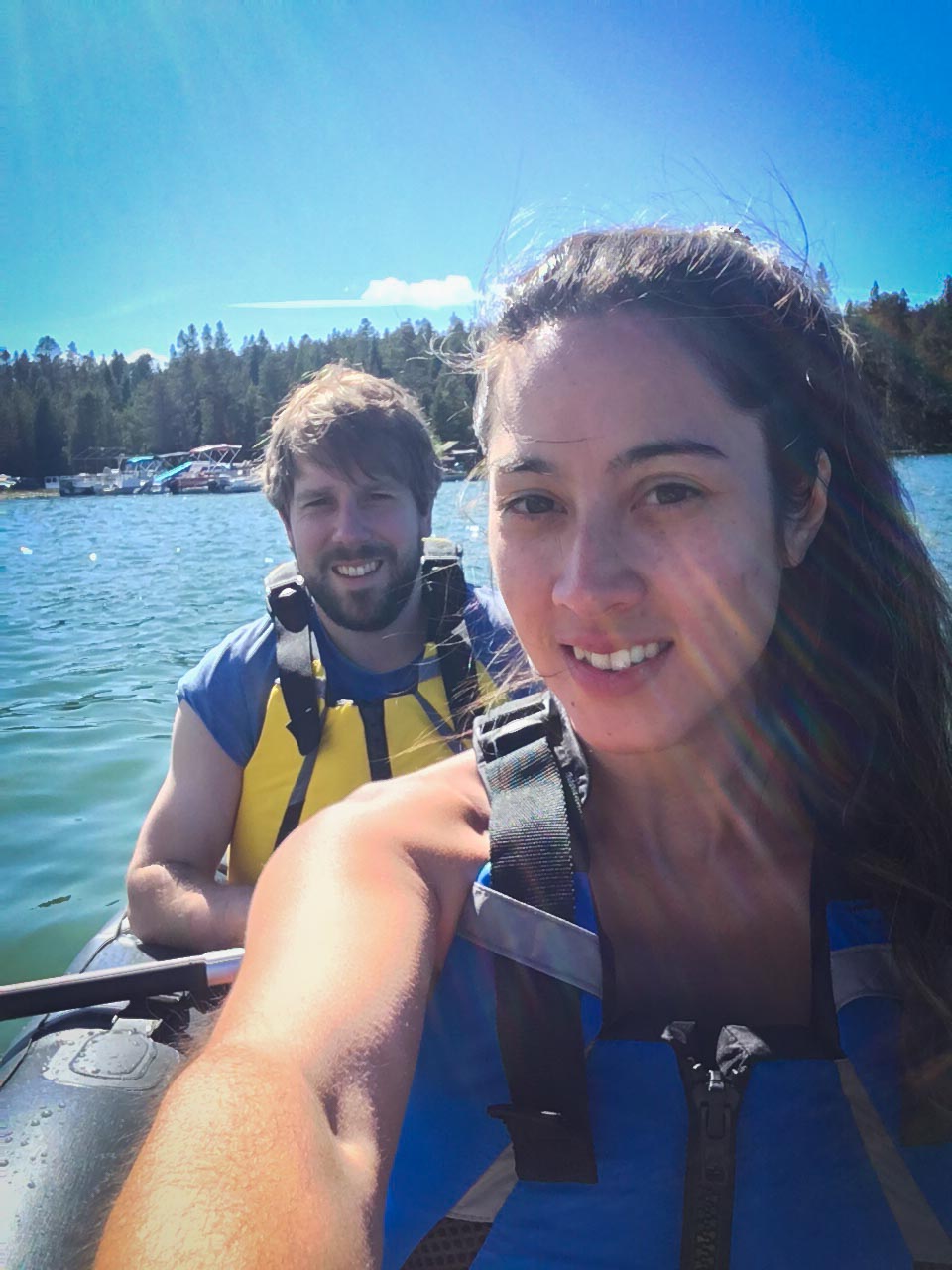
At the heart of the volcanic monument is the seismically and geothermically active Newberry Caldera. Unlike Crater Lake, which is completely filled with water, the four-by-five-mile Newberry Caldera cradles two, smaller lakes—Paulina Lake and East Lake.
Both lakes offer great kayaking, canoeing and standup paddle boarding, while hiking trails allow you to explore the lakeshores.
During our visit to the Newberry Volcano, we spent a morning paddling Paulina Lake in our inflatable Intex Explorer K2 Kayak—highly recommended! It’s a great first activity to get to know and immerse yourself, almost literally, in this magnificent volcano.
Hike to Paulina Peak
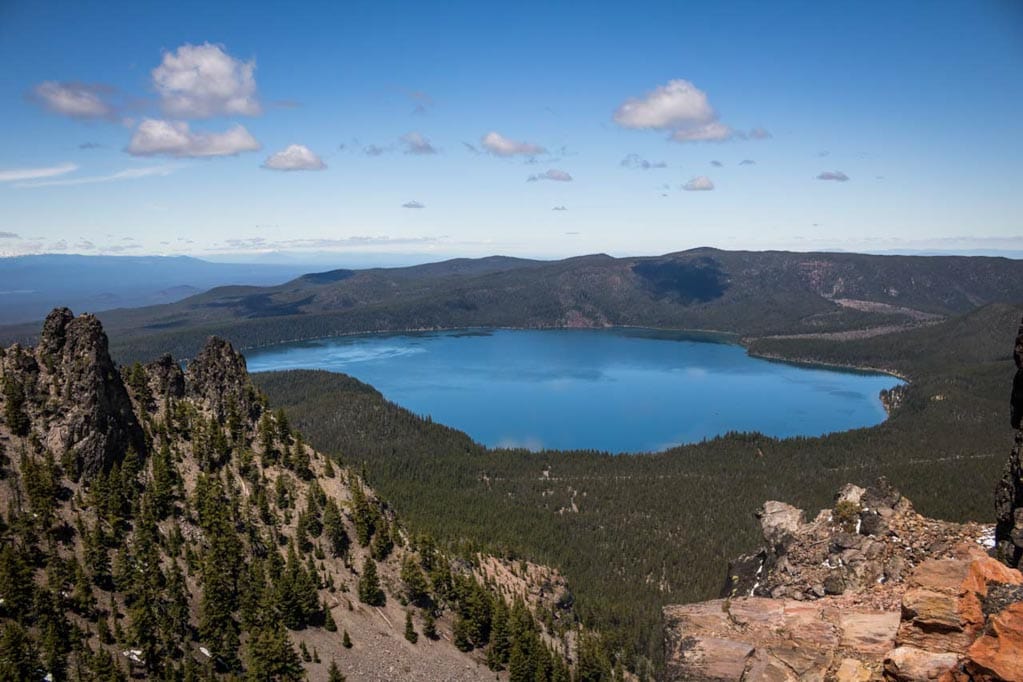
The highest point on the Newberry Volcano, Paulina Peak is 7,984 feet high and offers spectacular panoramic views of the caldera and lakes below, as well as essentially the entire national monument. While there’s a seasonal road, too, I strongly recommend hiking to the top of Paulina Peak.
The trail begins near the visitor center at Paulina Lake, running about 3.1 miles to the summit viewing area. This is an out-and-back hike of 6.2 miles and an elevation gain of 1,610 feet.
The return trip takes between 3 and 4 hours. From the summit, you can see most other highlights of Newberry National Volcanic Monument, including the two caldera lakes, the Central Cone and the Big Obsidian Flow.
See the Big Obsidian Flow
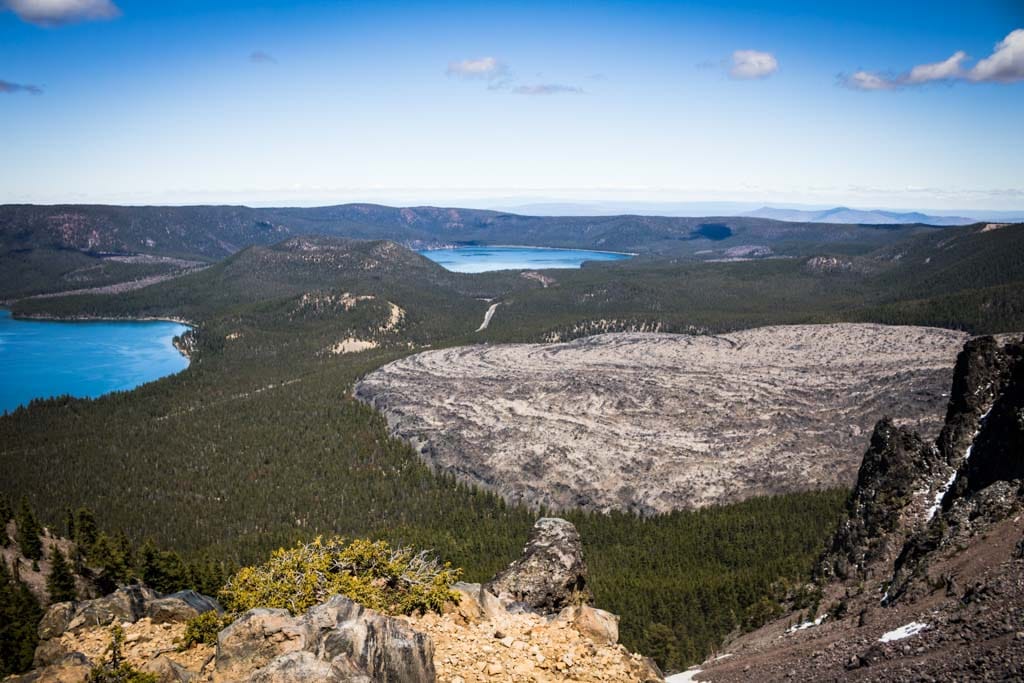
The youngest volcanic feature at Newberry National Volcanic Monument (and in Oregon), the Big Obsidian Flow is one of Oregon’s most fascinating geological attractions. Only 1,300 years old, it covers about one square mile in the Newberry Caldera.
There’s a fantastic view of the entire Big Obsidian Flow from Paulina Peak, but you can also hike a 1-mile loop trail through this extraordinary flow of natural black glass, which forms when lava cools without crystallizing.
If you want to see volcanic glass in the very location where it originated, few places are better than here. This is absolutely one of the top attractions in Deschutes National Forest.
Explore Lava Lands and Lava Butte
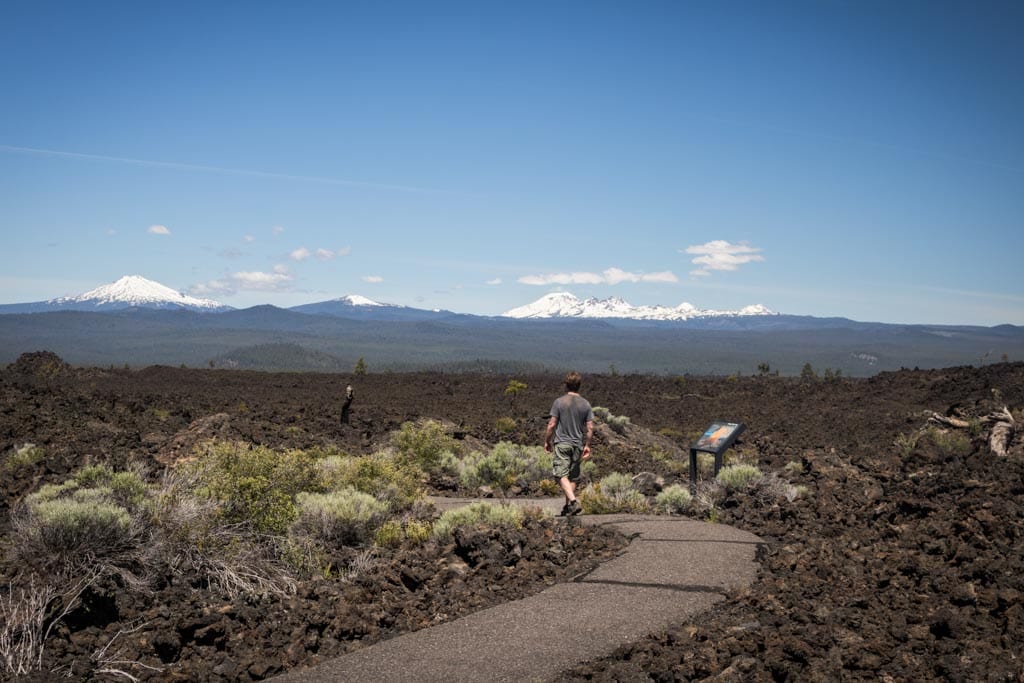
The Lava Lands Visitor Center, Lava Butte cinder cone and surrounding lava fields are one of the most popular places to visit in Deschutes National Forest.
Just off of Route 97, south of Bend, Lava Butte is an imposing near-perfect cinder cone. It is part of a larger area of cinder cones on the northwest slope of the Newberry Volcano.
A hiking trail circles its way up to the top of the cone and its crater, offering breathtaking views of the lava fields below.
The interpretive Trail of the Molten Land, on the other hand, loops through the lava lands and gives you an up-close insight into what happens during and after a volcanic eruption. Look to the west for a view of the Three Sisters volcanoes in the distance.
Other Outdoor Activities in Deschutes National Forest’s Newberry National Volcanic Monument
- Walking through the remarkable Lava River Cave
- Camping at Little Lava Lake
- Visiting Paulina Falls
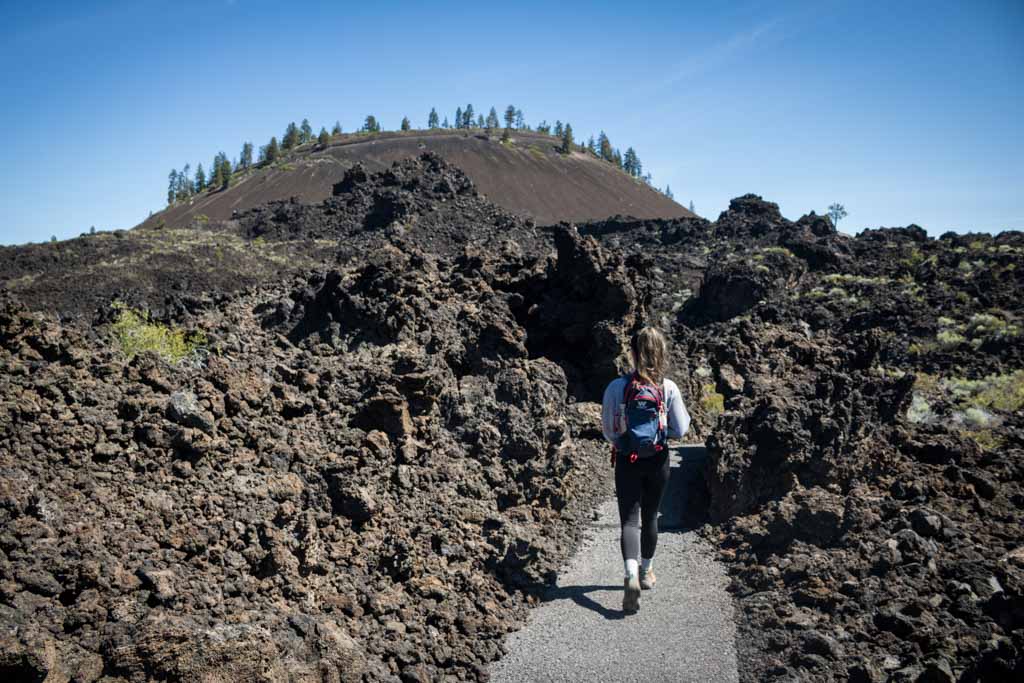
LaPine State Park: Recommended Deschutes National Forest Road Trip Campground
Although there are several campgrounds, both primitive and developed, scattered throughout Deschutes National Forest, I’d recommend staying at the LaPine State Park campground.
Situated just south of Deschutes National Forest, and north of the town of La Pine, it is arguably the best base camp to explore both Newberry Volcanic National Monument and the Cascade Lakes area.
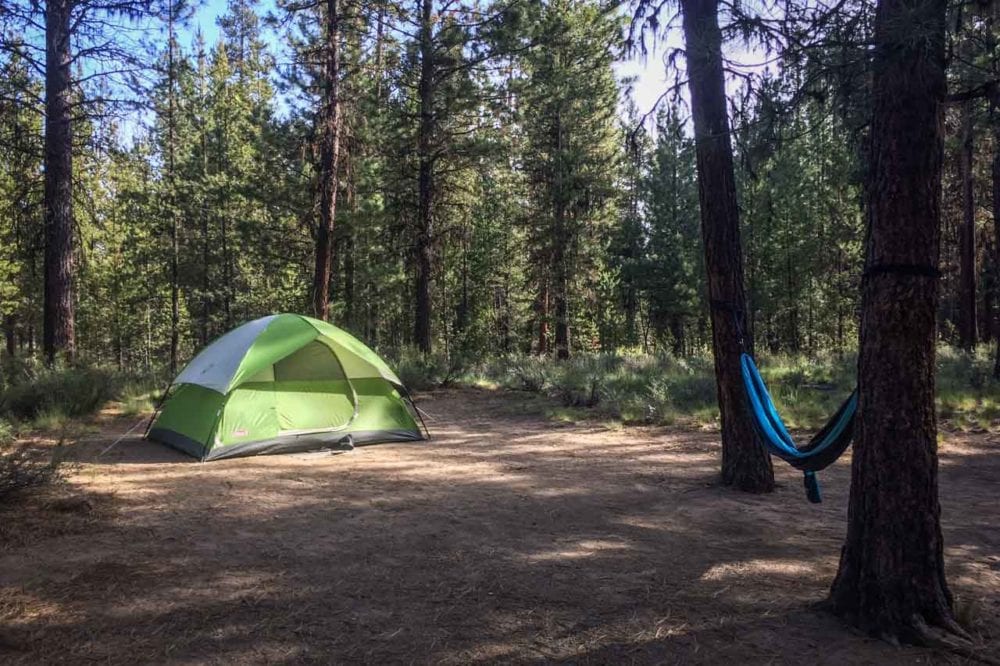
Set in a peaceful forest of lodgepole and ponderosa pines, including the largest ponderosa pine in Oregon, on the banks of the meandering Deschutes River, this excellent campground has tent and RV sites, including electrical sites and full hook-ups. A few cabins are available, too.
I loved getting back to this campground every evening after a long day of adventures somewhere in Deschutes National Forest. LaPine State Park itself also has its fair share of things to do, though.
There’s great hiking, fishing, mountain biking, floating and boating. A boat ramp makes things a bit easier for canoers and kayakers.
More information about LaPine State Park: Oregon State Parks website
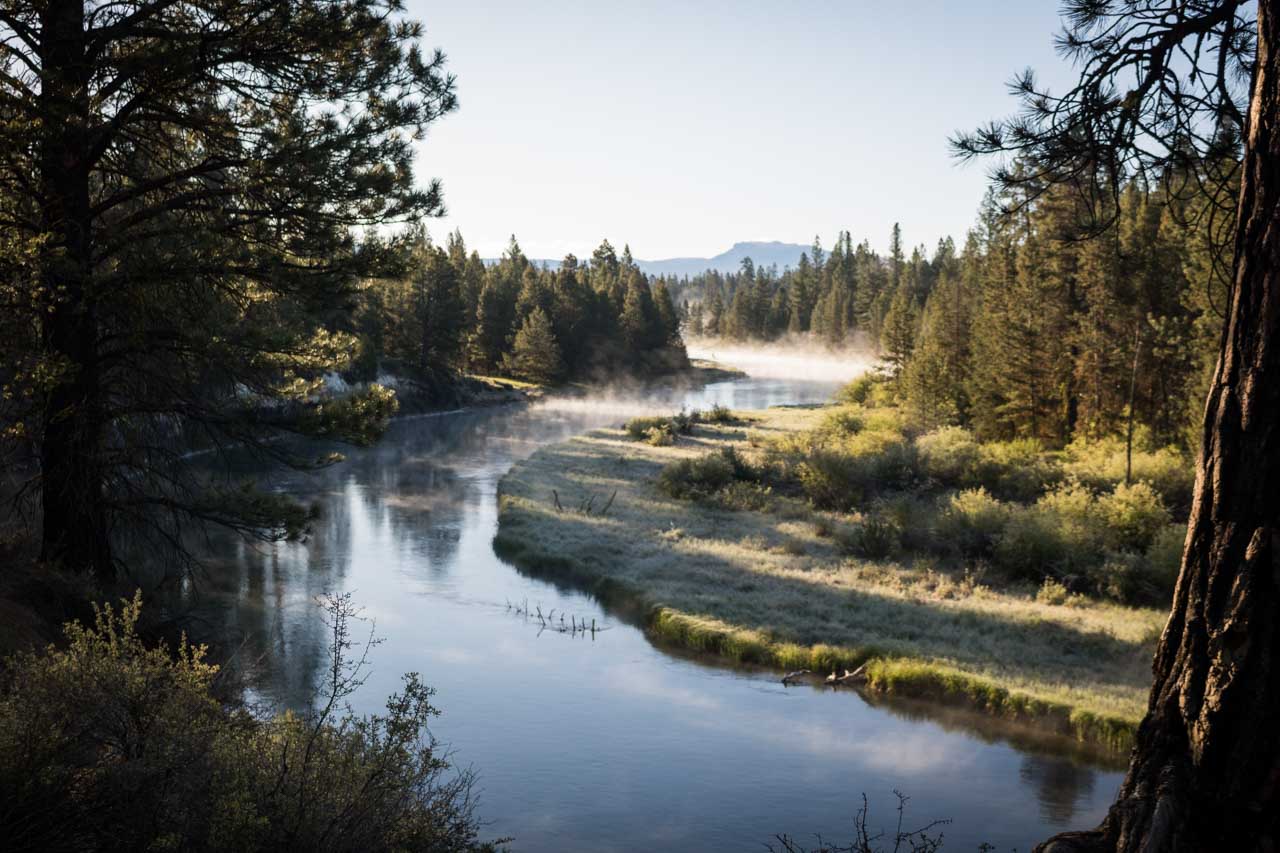
Bend: Gateway to Deschutes National Forest, Cascade Lakes & Newberry Volcano
If you’re not into camping, I recommend using Bend as your base to explore Deschutes National Forest. Central Oregon’s premier tourist hub and outdoor town, Bend is home to beautiful riverside parks, shops, restaurants and one of densest concentrations of craft breweries in Oregon.
Booking.comAfter you’ve seen and done all these Deschutes National Forest attractions and activities, and you have more time to spend, consider visiting these places near Bend, too. They’re some of Oregon’s greatest natural highlights.




